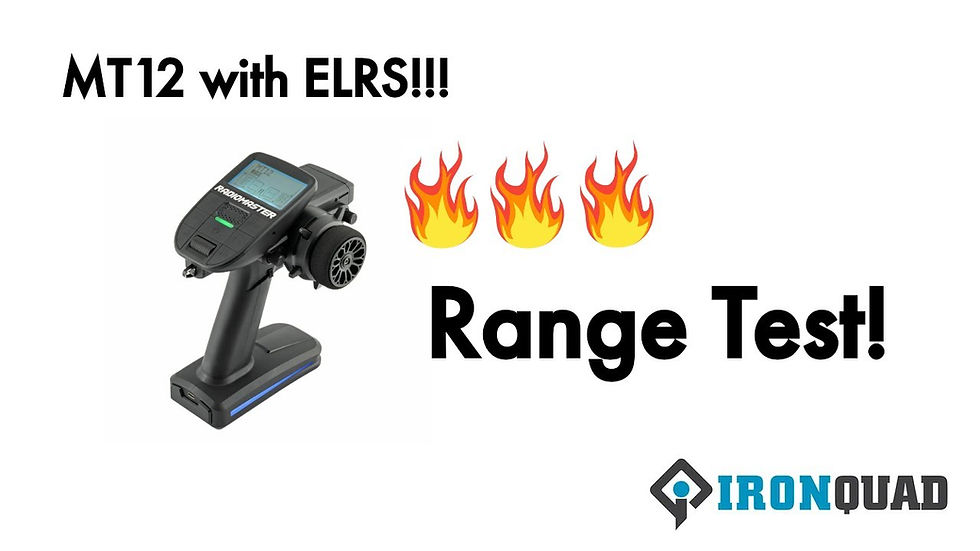Which Goggle should I get?
- IQ

- Mar 5
- 4 min read

You can't go wrong with either choice as they both have the same capabilities of head tracking, HD live footage, and stabilization. The only differences will come down to personal preferences and upgradeability. We are solely focusing on the goggle options as the video recording options will be for a separate blog post.
Screen Resolution Differences

Let's start off with the screen quality. The majority of the human eye can only process up to 60fps (Frames Per Second) and up to 60Hz. What this means in English is that videos are processed as pictures but pieced together.
You might have tried this but basically this is what FPS is when talking about video. The higher the number, the more pictures are shown per second, resulting in a smoother video. (60FPS means 60 frames are shown in one second)
Using the same concept, your screen must be able to process the FPS which is measured by refresh rate, or measured by Hz. Higher the Hz, the smoother your video is shown.
Although the human eye can process roughly up to 60FPS and 60Hz, the higher FPS/Hz can result in a slightly smoother video. The vague explanation is the flickers can be more "smooth" as the frame and refresh rate is increased.
Size & Weight
The X might have a slight advantage in this category as it is dimensionally smaller and lighter weight.

The L's dimensions are 148.8mm Wide x 121mm Length x 72mm Height.
The X's dimensions: 163mm Wide x 100mm Length x 53mm Height
(These are our rough measurements without the antenna)


The weight might not bee too far off but being an FPV pilot for several years now, being slightly lighter does help with the fatigue factor if you plan to have the goggles on your head.
Other thing to note is that the X feels significantly lighter and compact. It might just be a mental thing but it also seem to pack easier into an FPV backpack.
FOV (Field of View)

The larger the FOV, the more immersed you can be in the FPV experience. The goggle L wins here as it boasts a 75degrees while the X has 50degrees.
The both have dual screens as each eye gets a screen to themselves. However, it feels like the X gives you a better experience as the screens can be adjusted specifically for each eye.
Personally, I did notice an issue with the X as my eyes had a difficult time adjusting to them. (Seeing double) Once my eyes got adjusted, it wasn't an issue but just an FYI.
Need glasses?

This is where I believe the X truly shines. You can adjust the IPD and Diopters specifically for you!
IPD moves the lenses closer or apart (left or right). This is the gap between your eyes. The Diopters (focus) allows from +2.0 to -6.
I highly suggest adjusting one eye at a time and do a final adjustment with both eyes open at the end.

However, the goggle L does have holes where you can attach an insert to your prescriptions.
These inserts can be ordered directly through CaddxFPV.
What is the range?

Can you guess who has better range performance? It is actually the goggle L as long as you keep the XplorerHD camera module directly in front of you. Why is this?
The goggle L comes with 2x patch antennas that are great for coverage directly in front of the antennas. As long as you can keep your R/C directly in front of the goggles (the antennas are mounted pointed directly in front) the L will outperform the X.
However, this is where the X shines again as you can customize which antennas you can install on the X. The stock antennas are omni antennas that sacrifice straight line"ish" coverage for more 360degree coverage. Technically, the stock X antennas will have more coverage on the sides and rear than the L.
I do highly suggest investing (yes, it is an investment for your sanity) in high quality antennas if you choose to go with the X. Here are some notes to help you choose which antennas to install.
RP-SMA connector (This is the correct connector to mate with the X)
High quality brand antennas (Do not cheap out on this, yes quality REALLY matters here as the construction of the antennas significantly affects the performance)
These are the types of antennas
Patch: Straight, in front, coverage pattern. Best for longer ranges.
Omni: 360degree circular cover pattern. Best to drive from the sides and rear of the goggle at the cost of range. (See the diagram above as an example)
Gain (dBi)
This is mostly for the patch antennas and measured by dBi. (Omnis have this too)
Higher gain: Focuses the coverage more directly in front (narrow gain)
Lower gain: Coverage becomes larger to the sides at the cost of range (wide gain)
If you are still with me at this point, the X shines because you can mix and match the omni and patch. If you want more further distance coverage, then considering going with all patch antennas with slightly different gains might be your choice.
If you want a mix of both worlds, then getting a set of omni plus a patch is your choice.
We look forward to your next adventures and please share your moments with us by tagging us on YouTube or Instagram!
If you want to check our system out, please click here: https://www.ironquad.com/xplorerhd




Comments